We loved the wit, creativity, energy, commitment, and choreography by Stephanie Lake. All in about an hour. Nicely done.
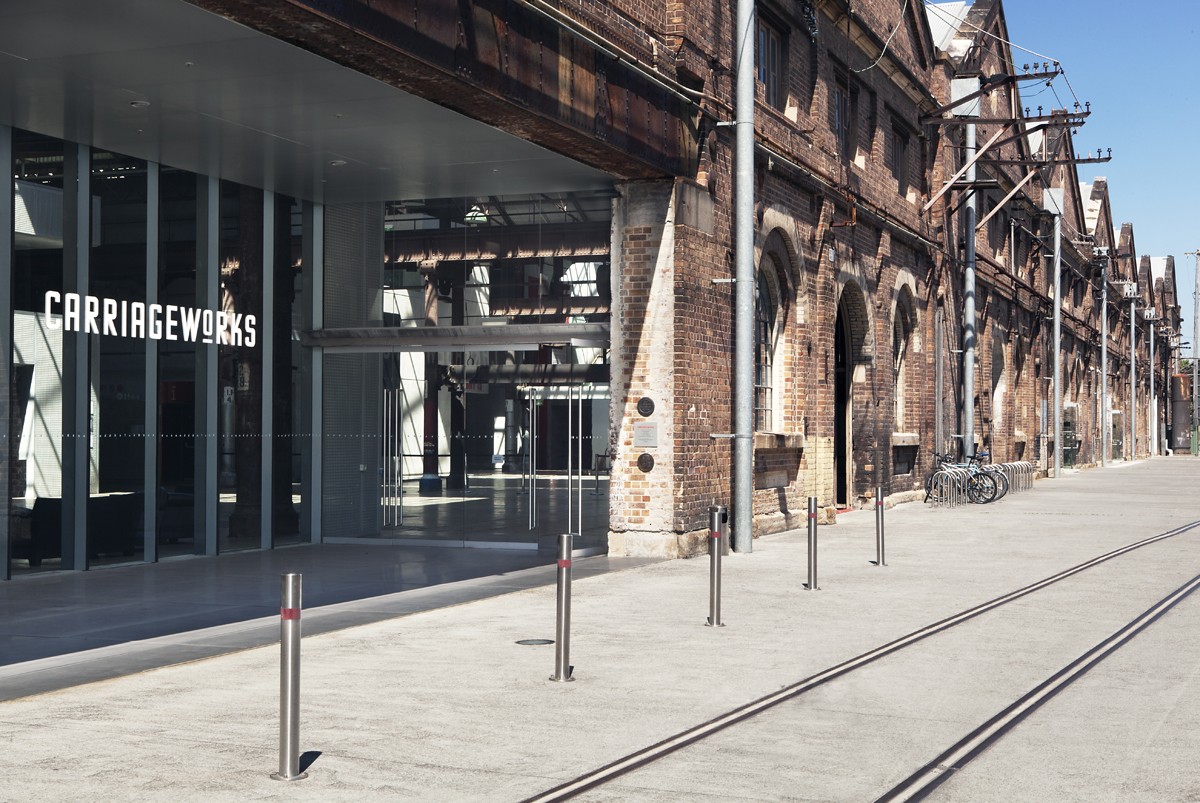
The sounds of buzzing electricity coveys human interactions and emotions in the reactions of the dancers.
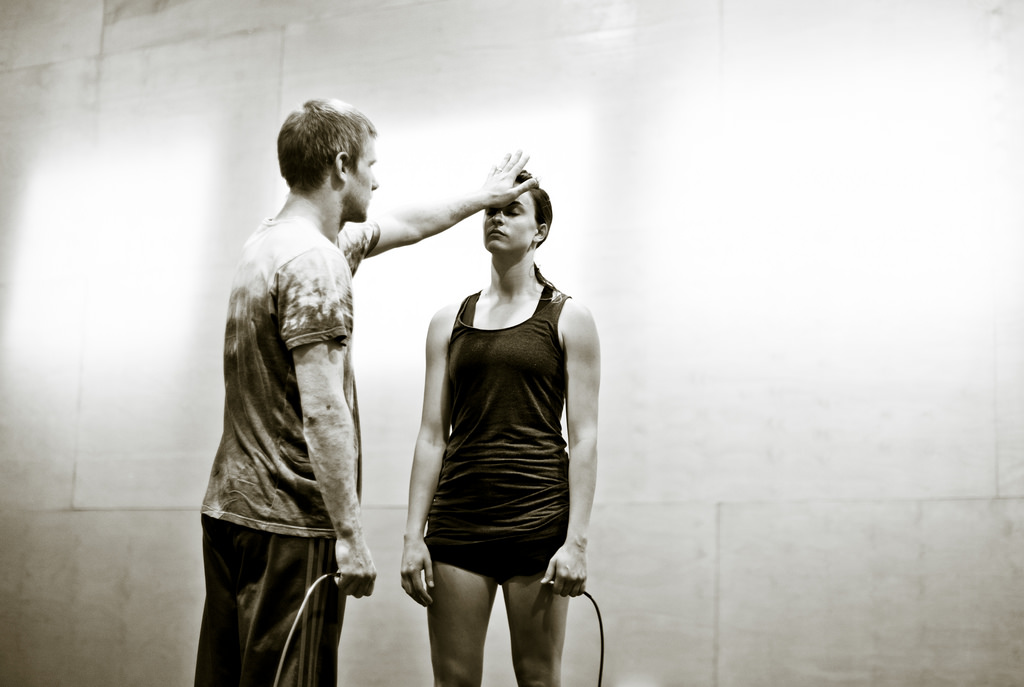
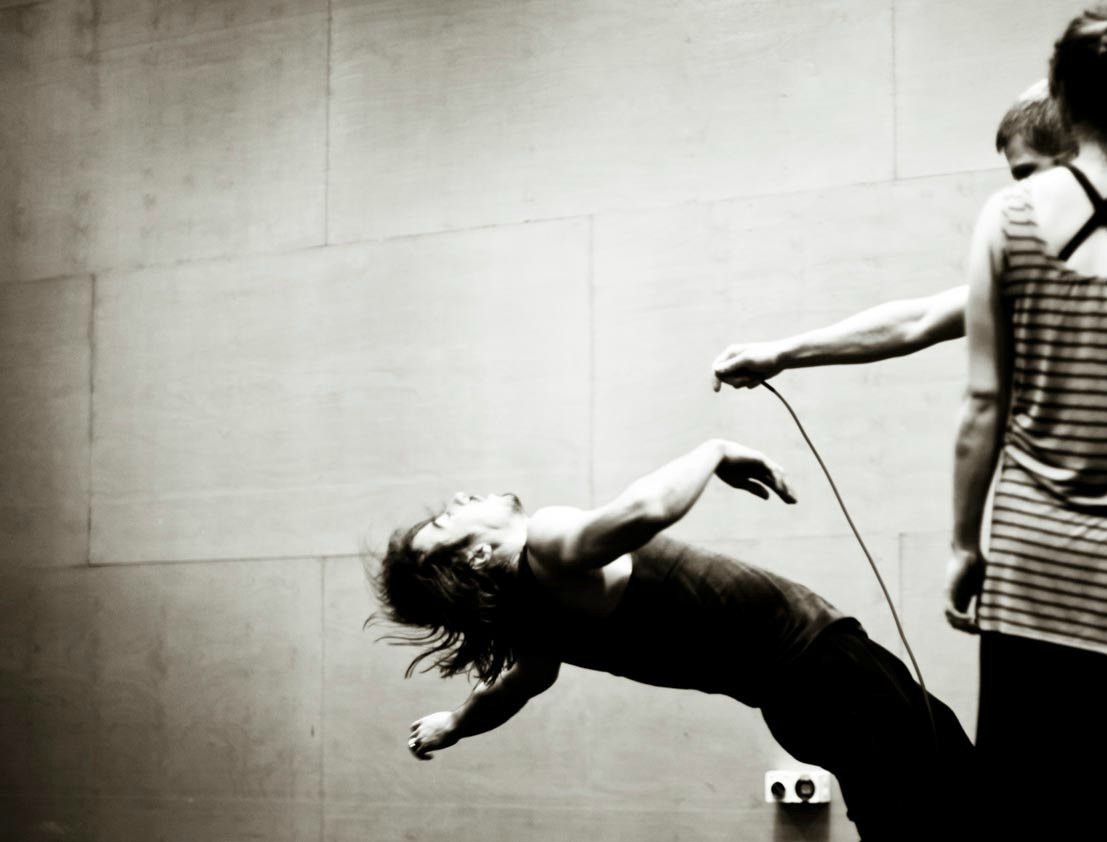
It is divided into segments and it might have been nice to have them named in a program if for no other reason than to allow a viewer to reflect later on what has been seen.
Some of the early segments were intriguing and amusing: they seemed exploratory. The opening segment showed the energy between a young man and a young women, part playful and part serious. It drew in the audience, a full house it seemed in; l leaned forward, and I was not alone.
During one unpleasant segment in the middle, a voice-over said the word ‘experiment’ in a European accent. Moreover, the static sound in this part was taxing to the ears, like the screech many of us would fear in Room 101. (Get it?)
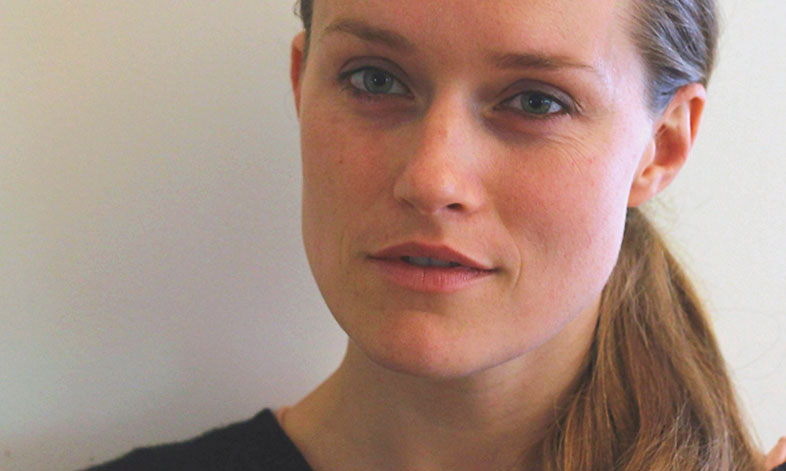 Stephanie Lake
Stephanie Lake
The closing segment was a reminder of Dr Frankenstein testing the capacity of electricity to bring creatures to life and to bend them to his will.
The press notes say that the choreographer was inspired by the Stanley Milgram experiments of the 1960s, which have been so widely reviled as to enter into the popular culture where all things undergo an alchemical transformation to the simple and sensational.
Download file
Should I suspect that the inspiration was the film ‘The Experimenter’ (2015), which is, well, as they say, based on a true story, and inspired by Milgram’s original studies published in psychological journals culminating in the book ‘Obedience to Authority’ (1974)?
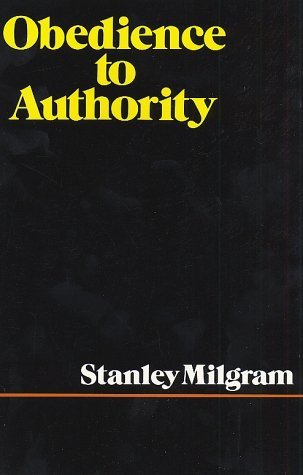
The apparatus to which the dancers were often tethered resembles the film prop. That much is clear.
The Yale University experiments both made Milgram’s reputation and destroyed it.
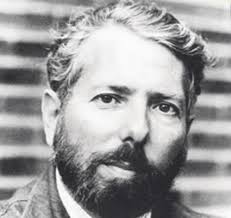 Stanley Milgram
Stanley Milgram
Made it, because he thought they showed the willingness of ordinary men (they all were men) to inflict suffering on other ordinary men at the behest of an authority figure, and so the results have entered the popular consciousness: We all have a little evil torturer within ourselves. In reaction, he became a celebrity social scientist on the talkshow circuit, rubber chicken speaking tour (on which I saw him in flesh), and head-hunted by universities to add glamour to their funding raising.
Destroyed it, because in the inevitable backlash (read envy) there was a competitive rush to find victims of Milgram himself and to feel sorry for them. A number of psychologists concluded that the ordinary men who participated in Milgram’s experiments had suffered anxiety and fear in ostensibly inflicting pain on others. He became a persona non grata and the Olympian American Psychological Association enacted research protocols to prohibit research that might stress subjects.
‘Blind’ and ‘double blind’ have specific meanings in research. In general ‘blind’ means that one person does not know the identity of the other. When the paper I submit to a journal is assessed by editorial readers I do not know their identity; I am blind to their identities. Sometimes they are permitted to know my name on the cover sheet of the submission. That is an example of ‘single blind,’ or ‘blind.’
When the cover sheet is removed and the manuscript is otherwise cleansed of any information that might reveal my identify then the editorial reader does not know my name. Voilà! This is ‘double blind.’
Human ingenuity can find ways to signal identity through this process and well informed editorial readers make their own inferences, but that is the form, which is practiced very generally these days, made easier by digital communication which widens the net at both ends, submissions from around the world which and sent to editorial readers around the world.
In experimental work like Milgram’s ‘blind’ means that the subject does not know that he (I am going to stick with men because they were Milgram’s subjects) does not realise he is the one being studied. These men were told that that the study was about how other persons reacted to them, in that sense they are part of the research team and not themselves subjects. Ha, ha, ha! They are thus ‘blind’ to the purpose. In this context ‘double blind’ would mean that the experimenter also does not know that the subject is the subject, i.e., whether a member of the control or treatment group, for those who know the terminology. This makes sense in some studies and it cancels any prejudice by the experimenter. A quick look at Milgram’s book does not yield a reference to ‘double blind.’
To return to the dance, perhaps ‘double blind’ means not knowing whether one is in charge or is a victim, is master or servant, is boss or employee. Perhaps those who think they are in charge are in fact being themselves manipulated by still others. That those who are running the machine are in fact being run by the machine. That is how Michel Foucault would put it.
Did Milgram prove what he said he had proven? That evil is within every ordinary persons who will blindly follow any authority. Really? Consider the context.
He did the bulk of those experiments while the streets in American cities like New Haven (Yale) and New York (NYU) where he did his studies were often choked with civil rights demonstrators opposing authorities equipped with pressure hoses, attack dogs, automatic weapons, tear gas… need I go on? When the civil rights protestors were recovering from the beatings they suffered at the hands of authorities, the streets were occupied with anti-war protestors opposing the war in Vietnam. Need I go on? In fact, both of these movements preceded his work and he took no notice of either.
Were his subjects everyman? They were those who answered the newspaper ads, and they were single men who wanted the fee for participation, small though it was. Hardly a cross-section of society. Milligram was not a sociologist so there was never any profiling of the subjects. I said ‘men’ above about the early advertisements called for ‘men’ and the wording of the reports in journal articles and in the book is always that. Nothing in the experiments went into differences among the demographic characteristics of the subjects by age, education, sex, occupation, and the like.
There is a very disturbing book about the evil within, and that is Christopher Browning’s ‘Ordinary Men’ (1992) which is a study of an German police battalion in Poland in 1940s implementing the Final Solution. Grim, indeed. But what emerges in the short book is that these were pretty ordinary men even in that terrible situation, and very few of them were zealous murders, but that some were and they were off the leash, while the others looked away. I learned more about evil from Browning’s book than Milgram’s and part of what I learned is that no generalisation works. I also learned that looking away is the reflex. It may be the best one can do.
Yes, I have published on this in ‘Orders and Obedience: Structure and Agency,’ International Journal of Sociology and Social Policy, 26 (2006)7-8, 309-325. Dial it up and be enlightened.
Milgram was a brilliant experimenter and his other studies have long been overshadowed by this series. He himself rather encouraged that, I suppose. But he did many others about crowds and queues all the while observing the Milgram rules made by the gods of the APA.
There is a novel that likewise claims inspiration from Milgram, namely Will Lavender, ‘Obedience’ (2009).
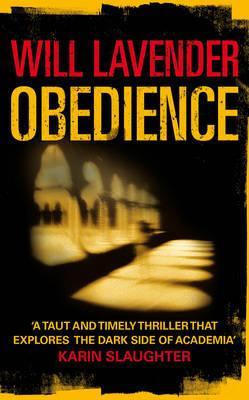
I liked reading it but the line to Milgram was tenuous.
Category: Review
‘The Events’ – The Sydney Festival
We trained to Granville to see Scotsman David Greig’s drama ‘The Events’ at the town hall. It is a grim story of the aftermath of a mass murder, stimulated by that in Norway in 2011. In this case the victims, far fewer in number, are members of a community choir. It centres on the nightmares of a survivor, the choirmaster. Grim to be sure. Not our usual choice for a day out, but the chorine goes where there are choirs and I follow along.
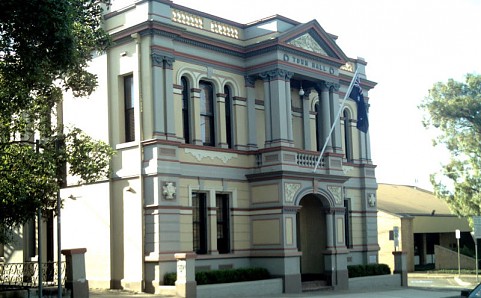
it is a two-person show with a choir. One is the lead, Catherine McClements who mainly plays the survivor, and John Carr who does a variety of others. It is not always immediately clear who these others are.
The stage is devoid of props beyond a few chairs and a tea urn. Clever use is made of the chairs and tea urn as the scenes shift.
I liked the banality of the celebrity interview with the berserk Viking warrior conjured by the disturbed dreams of the perpetrator. It did seem just as trivial and egotistical as the interviews on the morning TV shows that I notice at the gym. John Carr did this very well.
I also liked the caustic reference to reality TV. Could not agree more.
Carr has to change personae several times and usually succeeds by body language, expression, intonation but not always. Oddly, perhaps his least convincing effort is as the perpetrator. He does the rightwing politician who stirs up the kind of hatred the perpetrator let loose very well: glib, smug, amoral, solipsistic, ambitious, all in one teflon package. Instantly recognisable without saying a word.
Several times there was smoke haze, that seemed to be the only stage effect. I was unsure what I was supposed to feel or think of that. Was it the gas residue of cordite? Most gunpowder these days leaves no such smoke, though fireworks still do.
The survivor is so tortured it is uncomfortable to watch. The playwright spares us some of this by breaking the story up into flash backs.
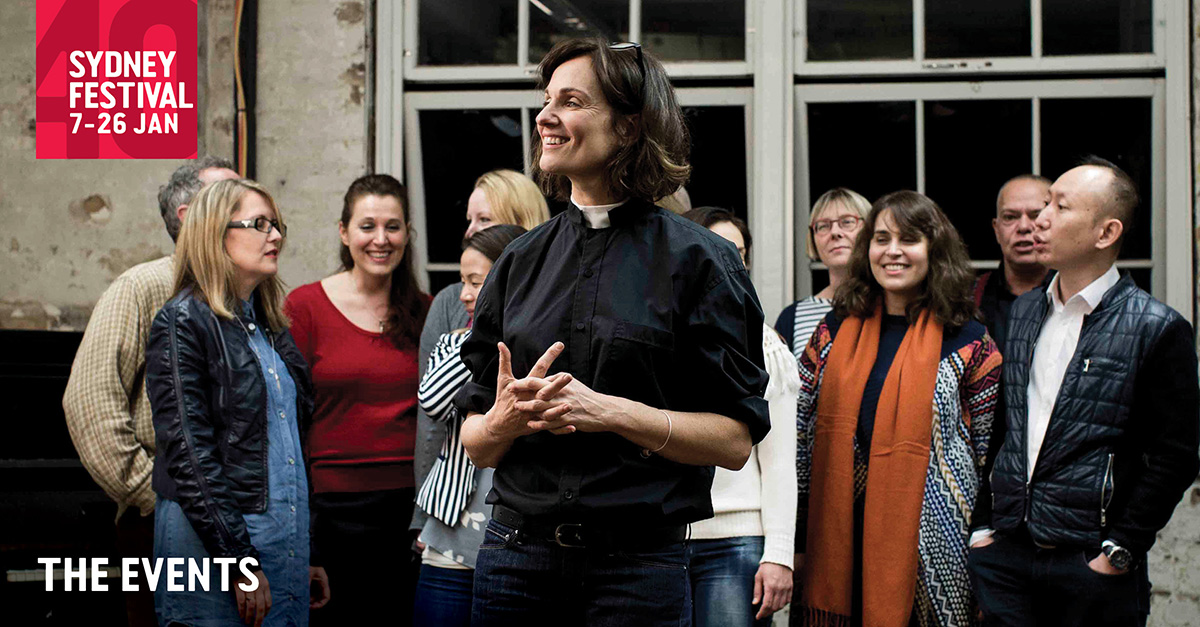
The choir, the victims, observe and occasionally sing, but not very much. It was not a Greek chorus as I had hoped, lacking the austere rigour of that.
The production started ten minutes late, and I wondered if somehow that was part of stage direction. If so, I enter a protest. It was unnecessary. If not intentional, I redouble the protest because professional productions starts on time, a thought I had when I looked at the ticket prices during the gap between published starting time and the eventual starting time.
The Granville Town Hall is an empty hall and only a spare production was possible. The acoustics were fine, as was the view. Getting in and out was easy and there was easy access to plumbing. All good.
We went early to be sure to be on time and by some quirk of fate we found our way to El Sweetie, a Lebanese shop recommended by a our neighbour.

Four starts ***** That alone will take us back to Granville.
‘Dot Dot Dot’
A play at the Old 505 Theatre on Eliza Street at #5
O’Connell Town has its own live theatre between King Street and the Camperdown Park. I noticed it on a circuitous path from the gym to our new digs, and found it on the web. I read about ‘Dot Dot Dot’ and we decided to go.
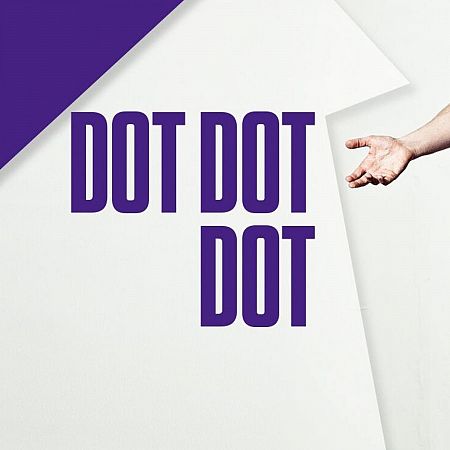
The play is set on the cusp of Federation in late 1900 in Sydney. A serial killer is at work, called Noah because each murder is a pair, two school girls, two merchants, two football players, etc. Two-by-two, Like the Ark before the flood. There is some Victorian spiritualism to confuse matters, a manipulative media mogul (guess who), a spineless political establishment, and much hysteria. The analogies to current events are transparent, but the play is not preachy.
The title ‘Dot Dot Dot’ I took to refer to connecting the dots to figure out what was going on and who was doing it. There is a twist in the tale that I will not spoil.
The staging was spare, toward the Kabuki end of the spectrum of stage craft, and, fittingly, there was some singing, though it is not a musical. Four players suffice. The young man has two roles to fill, as the naif police office and the scion. The older man likewise doubles up as the sage copper and the media mogul. The two women stay in their respective parts as sideshow mystic and woman of the night. The relationship among are tangled, and gradually get untangled through the first long act and the second short act. The direction is crisp, and the players inject conviction and energy in their performances.
 Lucy Miller and Matt Bell-King
Lucy Miller and Matt Bell-King
Niggles, we had a few. Some of the longer speeches were delivered at light speed, and I am sure we missed some relevant things. The shoes worn by the young police officer/scion are currently fashionable with the clown toes, but were not au courant at the fin de siècle in 1900. At one point the mogul says to his son that he will send him to Paris where he ‘can be among his own kind.’ We each independently thought that a reference to homosexuality, but it is not developed and the son seems to have had a sexual liaison with the female mystic. Given the Old 505 Theatre’s association with the Gay and Lesbian Mardi Gras, touted on its web page, the homosexual references is palpable, but irrelevant it seemed. That mystery did not detract from the fun of the show and gave us something to chew on while walking home across the park, where the nocturnal hoons were yet to gather, the pubs had not yet closed and flushed them all out.
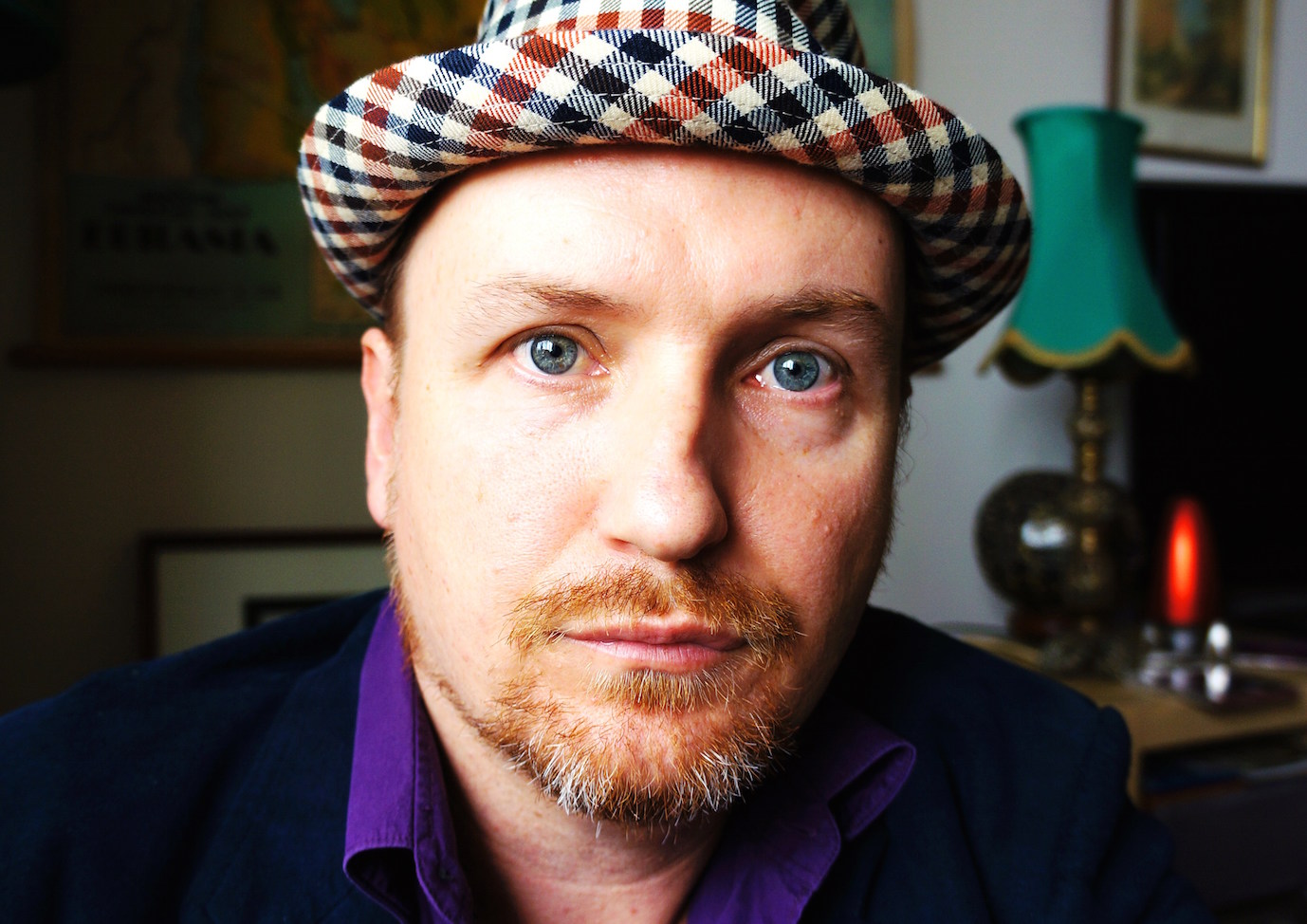 Drew Fairley, the writer
Drew Fairley, the writer
The venue is intimate, seating seventy at most; we sat in the back row but were not more than ten meters from the performance area. The front row is on the floor where the performance occurs at one point in a dramatic scene toward the denouement one of the actors, in full oratorical flight, brushed the foot of a spectator in the front row who gave a startled shout that added to the tension of the moment.
Elektra/Orestes at the Belvoir
A one hour summation of the blood bath in the house of Atreus.
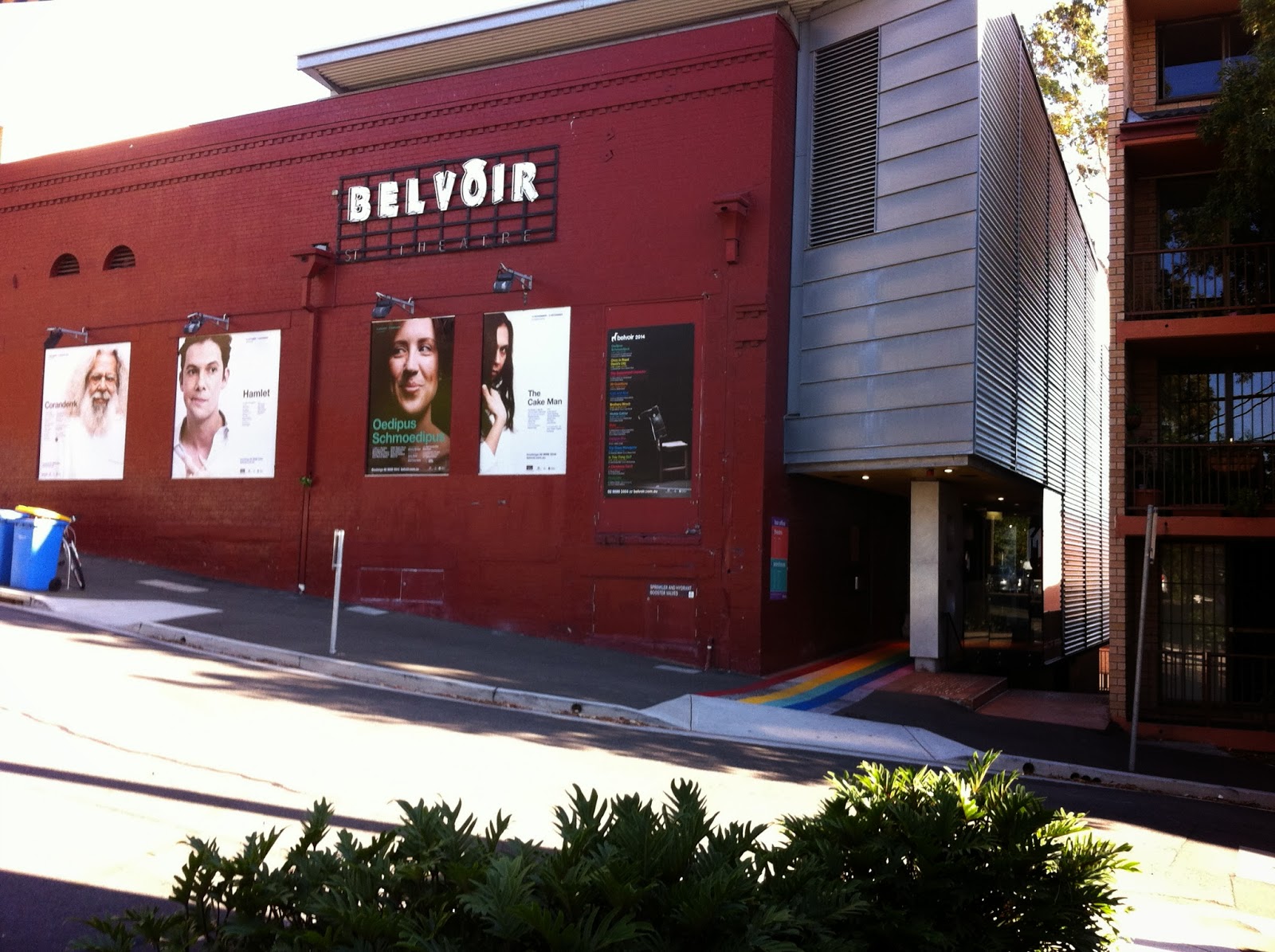
Brilliantly staged with a committed cast it takes many liberties with Euripides and updates it to the IKEA age.
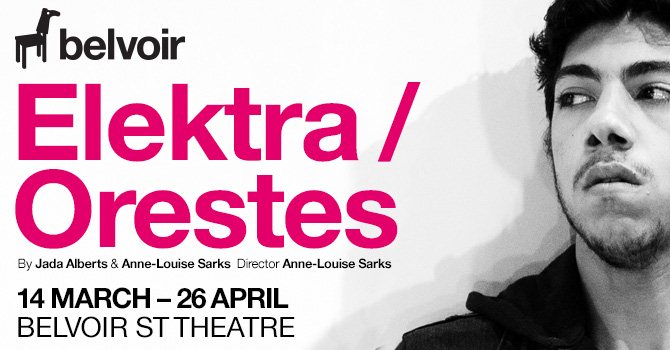
This Elektra is a petulant, overgrown teenager who sulks and makes a great deal of noise. There is in her no sense of impending doom or menace. She has spent eight years not growing up and seems bound to go on that way indefinitely. Though Elektra had to carry the emotional core from the get-go.
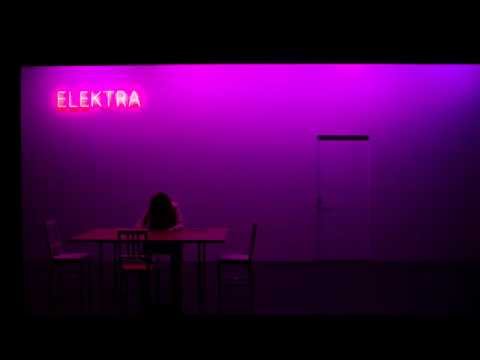
The intensity in the original is lost here in a blizzard of the F word. Nor did any of the famous lines from the original make the transition.
Vengeance in this rendering is reduced to filial love, but in any of the Greek versions there is far more at stake than that. Since the murder of Agamemnon the land has been cursed, no rain, goats born with two hears…. The natives are indeed restless, believing the gods have condemned the land and all who there dwell because of the murder of the king. The gods must be satisfied, yet the only way to satisfy the gods is with another unrighteous murder, that of Clytemnestra and her paramour. Indeed in the Greek versions, while the deed is done, it does not atone, for that Elektra and Orestes have to leave…. pursued by the Furies, but in so doing they draw the curse off the land. If tragedy has no-winner, then this is tragedy.
These quibbles aside, it was compelling and the overall theme of the story remains.
I particularly liked the insouciant Aegisthus with his worn bathrobe. Just right. Though it took him a long time to die and it began to seem as though Orestes was counting the stabs to reach a set number. I suppose the number of blows was intended to look like a frenzied attack but it did not; rather it looked methodical, and pointless.
But the overall staging was memorable, go see it for yourself to see why.
Lee Lee Nam’s Digital Art at the Korean Cultural Centre, Elizabeth Street, Recommended viewing for the jaded eye.
While on a round of errands in the city yesterday I made a point of going to the Korean Cultural Office on Elizabeth Street. Earlier I had read John McDonald’s review of an exhibit there, and I regard Honest John as a very reliable cicerone in matters of art. In addition, I have happy memories of the semester I spent at Korea University in Seoul. Finallly, I had walked by the KCO office a time ago on the way to meet some comrades for lunch at the Greek Club nearby. The conjunction of these stars led my steps, along with Google Maps, to the exhibition of Lee Lee Nam’s digital art.
While John’s review whet my appetite, it did not quite prepare me for the reality. In a surprising large space, darkened, I was alone with the works projected on Ultra High Definition screens; thank you, Samsung. Lee Lee Nam has taken traditional Korean, and a couple of European, images and recast them as video.
The result is delightful, captivating, and amusing. I took some video with the iPhone to show Katester who was otherwise engaged while I disported. The effect is to breath a great deal of life into those spare ink paintings that are otherwise, truth to be told, lifeless and repetitive. None of the images on the official web site do the work justice.

Imagine the aubergine stalks swaying gently in the breeze as the butterflies float by while the grasshoppers hop now and then, and you have it.
For more information cut-and-paste this link into the browser.
http://www.koreanculture.org.au/LeeLeeNamDigital
P.S. I do not post my video for fear of the Copyright Storm Troopers who patrol these blogs.
Miss Fisher’s costume collection. Recommended to fans of the Honourable Phryne Fisher Mysteries.
The exhibit is still on, details at this web site. Cut-and-paste it into a browser.
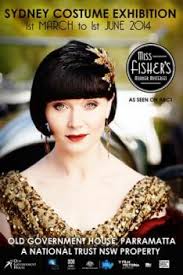
http://www.nationaltrust.org.au/nsw/MissFishersCostumeExhibition
If you are not a fan of Miss Fisher, get a life and become one. Start with this web link.
http://www.phrynefisher.com
Off we went by City Rail to Circular Quay Station and downstairs to Wharf 5 got the Rivercat to Parramatta all on the Blue Card.
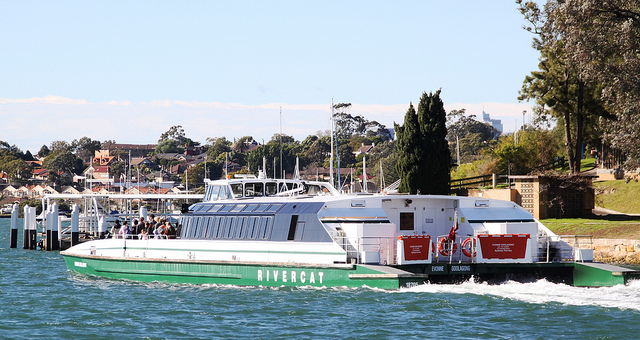
The Parramatta River wends its way inland and the ferry ride takes about 90 minutes with a dozen stops, including Darling Harbour, Abbortsford, Cabarita, and Parramatta where the ferry turns around and we disembarked. What a smooth and quiet way to travel and how different is the perspective on Sydney from the water. We passed many marinas along the way, and truth to tell some trash in the river.
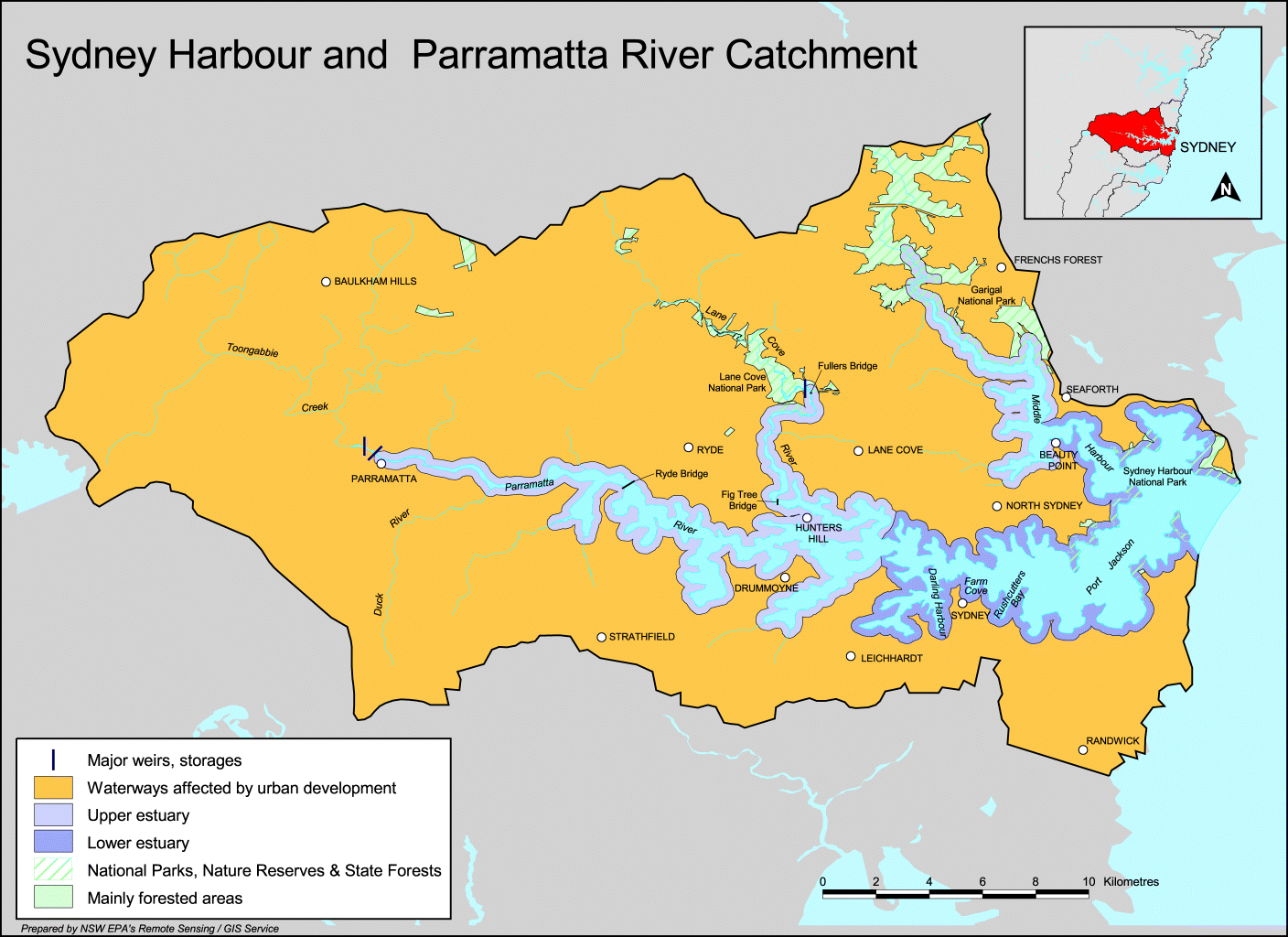 As we ascended the wharf there was a young woman offering maps and she recommended that we go along the river to Government House. (I assume she is a council employee to promote tourism, and for that I thank the council.)
As we ascended the wharf there was a young woman offering maps and she recommended that we go along the river to Government House. (I assume she is a council employee to promote tourism, and for that I thank the council.)
I had planned to walk through the streets but we quickly accepted the advice of local knowledge. We took the aboriginal walk along the river which was itself informative and good-spirited in laying out the past without recriminations, and in about 20 minutes we were at the original Government Farm which is now a park and there on a low bluff was Government House.
All new to me. Our tickets were scanned and we entered. Fabulous! We saw a similar exhibition at Ripponlea in Melbourne last year, and enjoyed it. When I read about the Sydney exhibition it seemed to include more, and since a day trip to Parramatta by ferry had long been on the to-do list, the exhibition triggered it.
So many hats, many of then cloche in the 1920s manner, and fifty or sixty frocks, coats, ski wear, and more. The volunteer docents were friendly and helpful. The Muzak was 1920s. This exhibit included some of Jack’s gear, whereas the Melbourne exhibit did not. The balance between his and hers in the display was about that of department store between men’s and women’s wear: 1 to 100. There was one Jack fedora, one overcoat, one business suit. End. But Phryne Fisher is such a corker, who can deny her the rags?
The building itself is worth seeing, built by that visionary Governor Lachlan Macquarie.
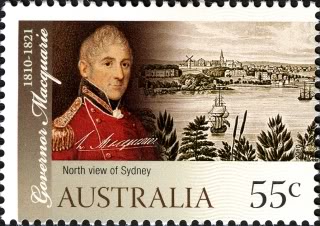 He built for the future, the distant future. But his vision has come true now that Parramatta is the demographic centre of Sydney.
He built for the future, the distant future. But his vision has come true now that Parramatta is the demographic centre of Sydney.
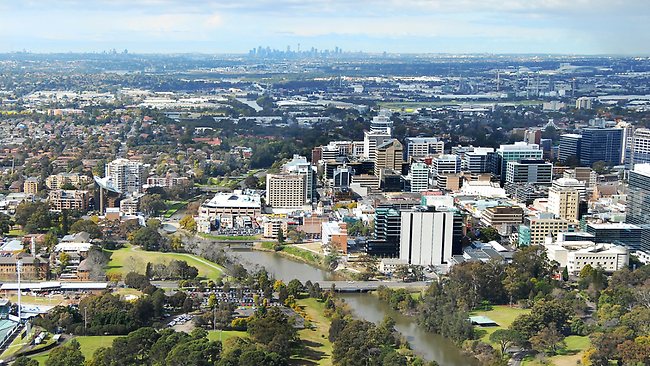
We had a fine time. And then it was time for lunch! Fish cakes for me and salt-and-pepper squid for the child bride in restaurant on the grounds. Perhaps the stables once.
Taking advantage of the Blue Card’s all-purpose use, we walked to the shopping mall, bought some salmon for dinner and then took City Rail, an express, to Central and changed for Alpha Prime, aka Newtown. A much quicker return.
It was a 10,000+ step day and it was hot and sticky. Time for a treat! On the way home from Newtown Station we stopped at Gelato Blue and indulged in that Italian vice. Yum! Anything to get another stamp on my loyalty card.
I read three or four of Kerry Greenwood’s Miss Fisher novels years ago, and I was pleased to see them come to the screen. And what a coming! Brilliantly realized. Well plotted, period detail perfect with all those clothes (and hats), automobiles, locations like Ripponlea, and the rush to the future of the 1920s with the advent of Art Deco. Then there is Miss Fisher herself, magnificently realized along with the dour Jack and her team, Mr. Butler, Dot, and the two taxi drivers, Bert and Cec for the heavy work.
For a much more serious take on post-World War I Melbourne in a krimie see the novels of Carolyn Morwood, like Death and the Spanish Lady (2011) and Cyanide & Poppies (2013). They are contemporary to Miss Fisher but much darker and they are very well done.
Museum of Australian Democracy, Canberra
I offer some comments after a visit. At the end I qualify these remarks. It is certainly an excellent museum and it has a bright future. These comments are offered to contribute to that future.
http://moadoph.gov.au
First, it is an eye-opener to roam through the Provisional Parliament House, as it was called when it was built, but it is now referred to as Old Parliament House.
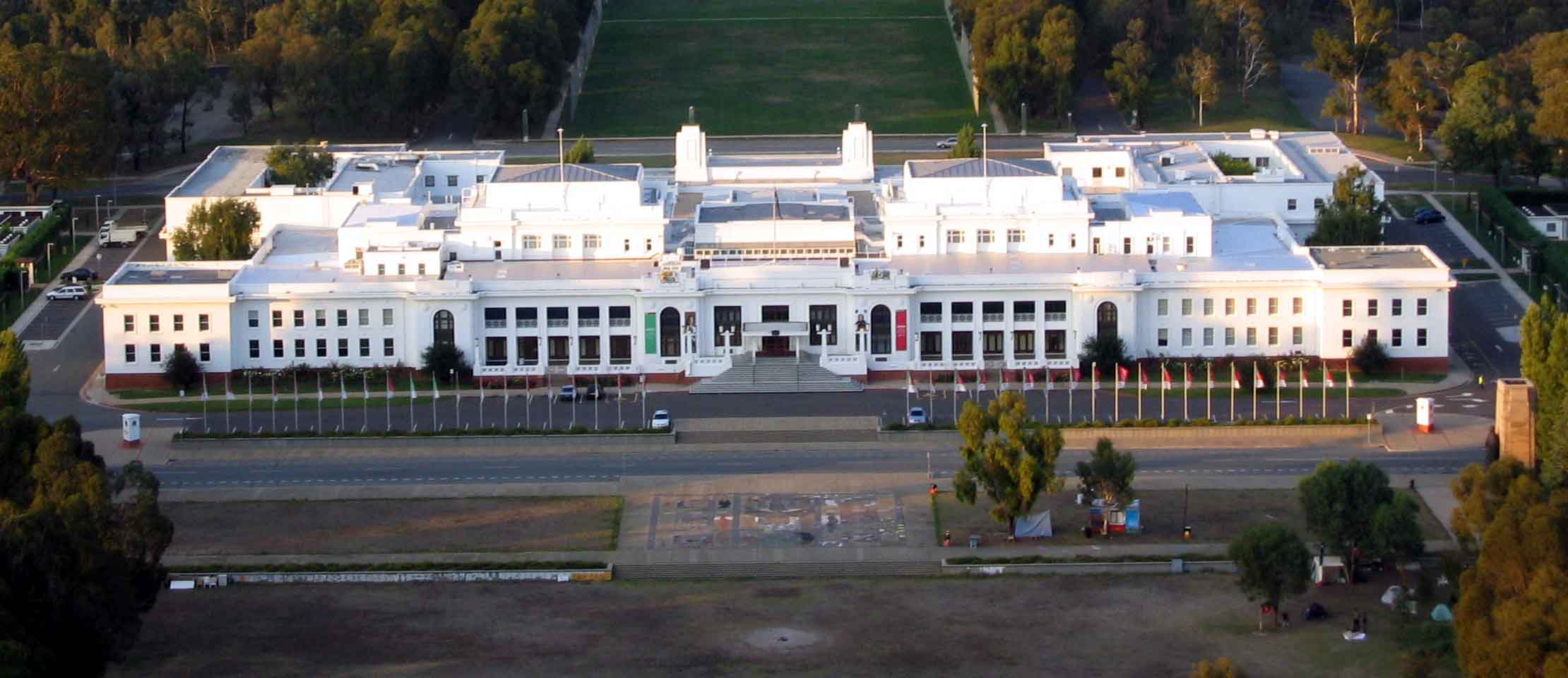
The plan of the building was for a working population of 300 and by the day it closed it had more like 3000. While the Prime Minister’s office is sumptuous compared to others in the building it was Spartan compared to most corporate CEO’s offices in the 1980s when it closed.
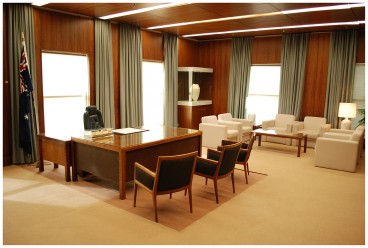
Perhaps there are ways to bring some of the workings of the building to life, e.g., a list of the activities that would occur in the building on a typical day with both houses in sessions, the committee meetings, the party room meetings, the interviews in offices, the debates on the floor, the division and division bells, etc. It would have a buzz.
Second, the two chambers — House of Representatives and the Senate — are small. So small that a single large personality at the centre table could dominate the room. Also so small that when the chamber went into a committee of the whole to go through legislation line-by-line it was small enough for everyone to be heard in a conversational voice, so I have been told and it seemed right.
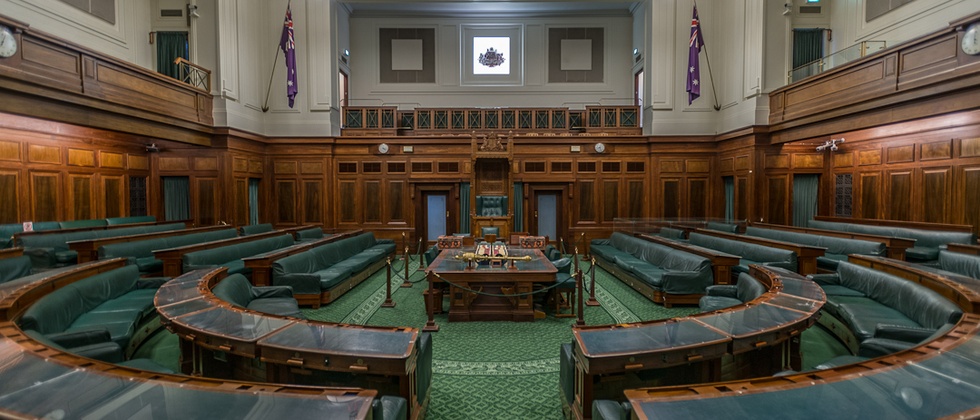
I thought I knew where on the front bench the prime minister and leader of the opposition would sit but I was not sure. Perhaps they need to be indicated somehow. If they already are, I missed it. Mea culpa.
Third, the expansion of the franchise to women and aboriginals was a strong point of the Museum. But there could be more about the evolution of the electoral system to the form it now has. The major changes in the 1920s from first-past-the-post voting to the preferential ballot and proportional representation has a long, colourful, and checkered history. Of particular value would be a simple, clear, and comprehensive explanation of how Senate ballots with preferences were counted in say en election with many Senate candidates without above-the-line voting.
It might also be desirable to look ahead to digital voting by reporting on how electronic and digital voting is being used in Scandinavia.
Democracy is about more than voting and I think that needs to be stressed. The purpose of voting is to create a government capable of governing for a term. That is more important than reflecting every current of transitory and ephemeral public opinion. Nothing in the exhibit places emphasis on this fundamental point. Pericles, who is present, certainly knew that. Too often, voting is just a game, as one of the boys said in the novel ‘Lord of the Flies.’ Governing, that is not a game.
Fourth, one of the strongest aspects of the Museum is the story boards which were accessible to children. I did not examine these closely but applaud their use.
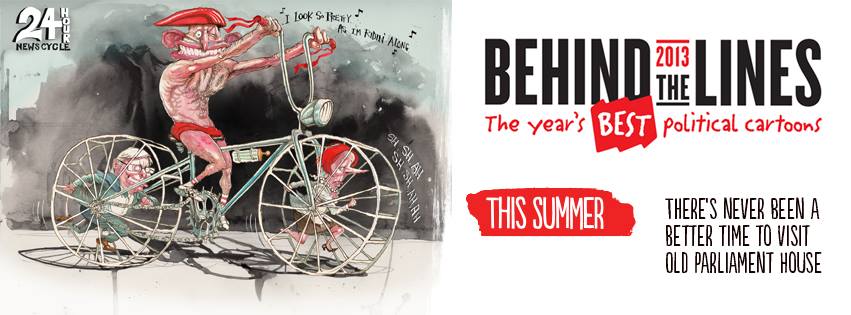
The cartoon exhibit left me cold, though I saw other patrons who were rapt. Different jokes for different folks, it is. I found the cartoons repetitive, simple-minded, and derivative. I also found those commenting on the ICAC investigations in NSW did not jibe with the national focus of Parliament House. Yes, I took the point that the findings damned the ALP but it was nonetheless a long bow to suppose that was of national importance. I am quite sure ABC Perth news did not feature the NSW ICAC hearings.
Moving on to some of the oddments included. That set of books in the library on social alternatives or futures or dystopias seemed, well, idiosyncratic. A library should certainly have books but what about handsome copies of the great books on democracy like:
Frenchman Alexis de Tocqueville, Democracy in American (1835 and 1845), two volumes
Italian Roberto Michels, Political Parties (1911)
Englishman James Bryce, Modern Democracies (1921) two volumes
Frenchman Maurice Durverger, Political Parties (1951)
Australian Alan Davies, Australian Democracy (1958)
Hannah Pitkin, The Concept of Representation (1967)
Dutchman Arend Lijpart, The Politics of Accommodation. Pluralism and Democracy (1968)
Canadian C. B. Macpherson, Democratic Theory: Essays in Retrieval (1973)
American Jane Mansbridge, Beyond Adversarial Democracy (1980)
American Robert Dahl, A Preface to Economic Democracy (1986)
Brazilain Roberto Unger,False Necessity: Anti-Necessitarian Social Theory in the Service of Radical Democracy (1987)
Australian John Uhr, Deliberative Democracy in Australia (1998)
Indian Niraja Gopal Jayal, Democracy in India (2007)
The list goes on. Mary Wollstoncroft and Thomas Paine are already there. By the way the Sydney suburb of Wollstoncroft was named for one of her brothers.
The list of the criteria of democracy was long and seemed to drift off from political institutions to other considerations. In retrospect, I am not even sure the most important one was there – peaceful and orderly changes of government with the consent of the governed. With that long list I wondered if the largest democracy in the world could possibly meet all those criteria, namely, India.
What is not there? Biographies of Prime Ministers would have been a welcome addition, even if just a bibliography posted with the pictures of each, but specimens of the books in the library would have been welcome in addition. Links to the Australian Dictionary of Biography would be better than nothing.
Singling out some noteworthy backbenchers like Bert Kelly would have reminded us all that parliament is not just prime ministers.
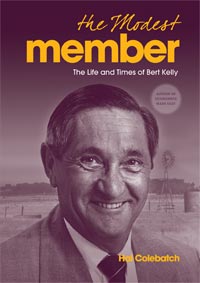
Some effort to spell-out the work of a backbencher apart from voting the party line would have been useful, e.g., the diary for a week of a hard working backbencher would be a revelation to many citizens.
There is also some research among backbenchers on how they see their role that could be summarized for display, are they there to represent their constituency or only those in it who voted for them? Are they there to prefer the national interest even at the expense of the interests of their constituency or constituents? Are they there to act on party directions on everything or is there room for conscience, especially in the party room? These questions might help explain the importance of the party rooms where backbenchers do have a say in shaping events before they reach the floor of parliament next door. Edmund Burke’s ‘Speech to the electors at Bristol’ remains the totemic text on this subject.
Constitutional or limited government is likewise not a part of democracy per se, though the exhibit bundles everything together. Great Britain had limited government long before it had democracy. South Korea and Singapore have had limited government with very little democracy. Athenian democracy was completely unlimited and did some very dreadful things to its own minority of citizens. Restraining the tyranny of everyone, including the majority, comes under the heading of limited government, not democracy per se. See Shirley Jackson’s story ‘The Lottery.’
The exhibit would do well to distinguish federalism from democracy. Federalism adds a division of powers to the mix, weakening the central government. Great Britain is a democracy and has long been a unitary government without federalism, only recent steps at devolution to Scotland and Wales signal a move toward something like federalism.
The exhibit muffs the separation of powers whereas the strength of parliamentary systems is the fusion of powers, but ever since a smirking journalist confused that Queensland clown with a question of the separation of powers the phrase has become an article of faith to be ritualistically intoned with the brain off. Historically British parliamentary systems united executive, legislative, and judicial functions and it is only in the last two generations that the judicial element has been isolated from the other two, i.e., no more appeals to the English Privy Council. It is a complicated point to be sure, but I am sure a clever lawyer could phrase it simply.
Qualifications.
There remarks are derived from what I can remember a week later. I took no notes.
I have been in Old Parliament House before in the public gallery of the House, once in the Senate chamber when it was not in session, and in a minister’s office.
My visit was not comprehensive. I did not press every button, look at every panel or object, read every word on the displays I did examine. I was a casual observer, as are most visitors.
One of the purposes of any museum is to edify and educate patrons, while entertaining them. I’d like more emphasis on a gentle but consistent effort to teach visitors a little about democracy, instead of asking them to express opinions on this and that, as if that is somehow democracy.
Dido and Aeneas
We festivaled again last night: ‘DIdo and Aeneas’ at the Lyric Theatre in Star City (wasn’t that the name of the Soviet space exploration site) Casino.
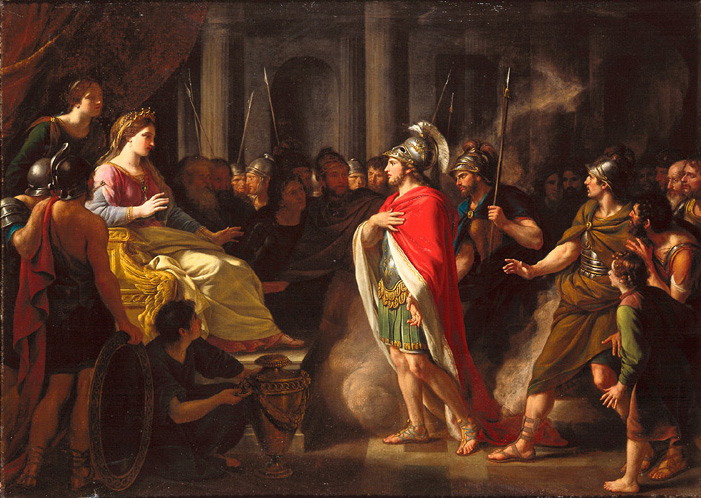
Before show time we walked around looking at the glitz, and there is a lot of it. But mostly what strikes the observer is the ranks of ATMs for quick cash! They are everywhere by the ranks, well not quite everywhere, none in the bog. (Probably next time.)
http://www.sydneyfestival.org.au/2014/Music/Dido-Aeneas/
We entrained from old Macdonaldtown Station, rather than Newtown, seeking as always a new sensation, and then took the tram from Central Station, all on our blue tickets! Smooth sailing, oops, smooth railing is more accurate.
Time came take out seats and the show began, and what a show! The water tank at the beginning was beguiling, fascinating, confusing, metaphorical, and appropriate. I am sure if Henry Purcell (1659-1695) could have done in his day, he would have. He loved a show himself. The combination of dance, opera, drama, and some slap-schtick worked for us.
It took a moment to realize that Dido and Aeneas had two representatives on stage, a singer and a dancer. Purists fainted at that I am sure. But I recalled Luis Buñel once cast three women as a single character in a film, saying he wanted to make the character complex and he could not decide which of the actresses could do that best, so he used all three!
The energy, the spectacle, the wit, the movement, the pathos, the drama, and that water tank were all good.
By the way, the program notes, which are all too often as banal as sports talk, are very cogent about the aim of the production — to balance the three major components of drama, dance, and song — and to return to Virgil’s story of exile and the synthesis of love and hate. And most of all, of course, the choice of Aeneas to accept his duty, his fate and leave Dido for Rome.
Pedants note, The Aeneid has always left me cold from my first effort to read it in college to a couple of repeated attempts including an audio version bellowed out by Simon Callow, who always seem to bellow even when whispering, something about voice projection. While I enjoyed this show, it did not inspire me to try Virgil again.
If Woodrow Wilson had lost the 1916 election
Hypotheticals are often very entertaining, and sometimes, though rarely, informative.
Woodrow Wilson concluded in October 1916 that he would lose his bid for re-election in November against Charles Evans Hughes, the Republican nominee. As a constitutional specialist Wilson had always deplored the hiatus between the early November election and the inauguration of the new president in March of the following year. During that three month period — the lame duck period — the incumbent had no legitimate authority though the formal powers remain.
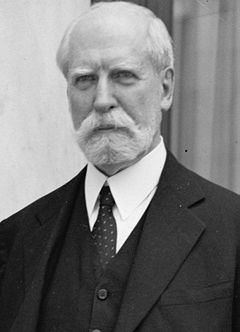
Charles Evans Hughes
In 1916 the lame duck would be no laughing matter with submarine warfare a weekly occurrence off the Atlantic coast of the United States and Europe burning in an endless war on a gigantic scale while Japan sharpened swords in the Far East and eyed Mexico. In that situation Wilson had no wish to exercise the formal powers shorn of a popular mandate. Moreover, he thought the people’s choice should take on the responsibility immediately.
He made a secret plan to accomplish that end while staying within the Constitution. Here is how he proposed to do it. As soon as it was official that Hughes had won, he would dismiss the Secretary of State, Robert Lansing. Wilson would then appoint Hughes to be Secretary of State. While Congress is not sitting the President can make acting cabinet appointments like this as a temporary expedient until Congress reconvenes. Once Hughes accepted the appointment, Wilson would ask his obliging and unambitious Vice-President Thomas Marshall to resign. Without a doubt Marshall would have readily complied. (Lansing would have almost certainly resisted but he served at Wilson’s pleasure and at the end of the day would have had no choice but to stand aside, willing or unwilling.)
With the way then clear, Wilson would himself resign, and by the existing line of presidential succession the baton would pass, absent a Vice-President, to the Secretary of State, Charles Evans Hughes who would also be President-Elect. Wilson’s supposed that this could be done within three days or even less once the election results were known. Hughes had only to travel from New York to Washington and say ‘Yes.’ Of course, Wilson hoped against hope to win, so he put the plan which he had typed himself in a desk drawer and waited.
On election day the result was close, and in 1916 reporting results was slow and sometimes uncertain since journalists sometimes jumped the gun. (No comment.)
It seemed by late evening on the East coast that Hughes had won. Hughes went to bed believing he had been elected President of the United States. But he woke up to find that California had voted for Wilson and the left coast was enough to keep Wilson in office. The secret plan went into the locked filing cabinet of history. Would a president today think so hard about the best interests of the country and be prepared to concede to an opponent to serve that interest?
In 1933 the XXth Amendment to the United States Constitution reduced the gap between the election and inauguration from early November to January and re-routed the Presidential succession, after the Vice-President, through the presiding officers of the House of Representatives and the Senate before going to the Secretary of State.
There are two competing principals. The first is that a successor should be someone aligned with the president and au fait with current developments in the executive, hence the Secretary of State as the most important cabinet office should be third in line. That principal applied until 1933, despite Secretary of State Alexander Haig’s remark when President Reagan was shot in 1981.
The second principal is that the successor should be an elected official with broad responsibilities, hence the presiding officers of the legislatures. While not members of the executive, they are engaged with the daily processes of government.
Eight of 44 presidents have died in office. In each case the successor was the VIce-President.
By the way, Hughes had a long and varied career in public service: Governor of New York, Associate Justice of the US Supreme Court, Secretary of State, Justice on the International Court of Justice, and Chief Justice of the US Supreme Court.
Agatha Christie, A Murder is Announced.
We went to see ‘A Murder is Announced’: A Miss Marple Mystery’ at the Sydney Theatre at Walsh Bay last night. Most enjoyable. Kate did everything after I very obliquely hinted that this play would be a fine birthday present for moi! **** Four Stars from me!
The set and cast evoked a bygone time from the 1950s. I was impressed with the way the actors looked like all those other actors in BBC dramas. The RAF mo’s, the flounced dresses, the side saddle sitting, the inspector inevitably in an raincoat… This play was so much fun, in part, because everyone in the audience knew the story, and I am sure everyone in the production assumed that. In that way it is like Swan Lake or the Iliad. There will be no surprises. Well, no big surprises, but quite a few little ones. Mitzi just about stole the show! Jane’s dead pan reply to the Inspector when rhetorically asked “Do you want my job?’ Of course, the main elements are deceits, layer after layer.
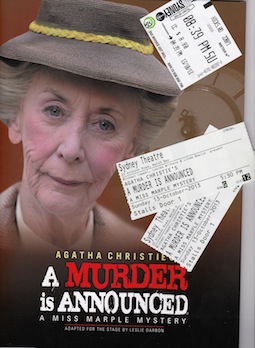
Perhaps the most curious thing in the staging was the cigarette smoking. It is in the text and was honoured here, but, as far as I could tell, only one of the actors with a cigarette puffed it like Bill Clinton. Most of the other cigarettes, after the ritual of lighting, were neither lit nor smoked. A production decision, it seems, delegated to the actors.
I have come back to Christie through the Poirot and Marple films. So meticulous, so analytic, so dogged and yet with a certain gentility of the time and place that is now relief from the too loud, too noisy, too garish, too simple, too fast, too dumb, too abrasive varieties of television policiers, most of which have the subtlety of a finger in a power point! I once read a lot of Agatha Christie but went off her in favor of the Mean Streets Noir books from Raymond Chandler, Ross MacDonald, Margaret Millar, Patricia Highsmith, and so on. The mature conclusion is both styles have a place in the pantheon.
By the way, Christie fans might like to know that she is a character in Max Collins’s The London Blitz Murders (2004).
